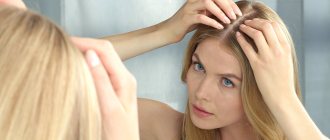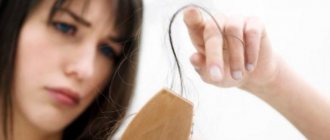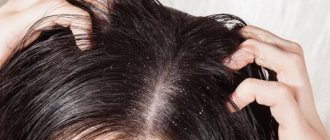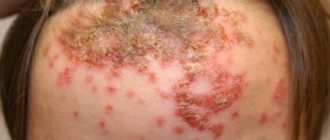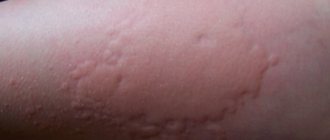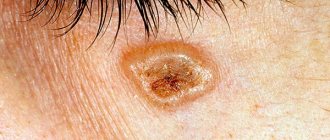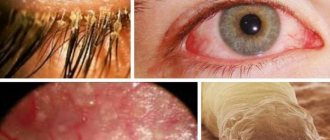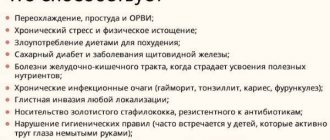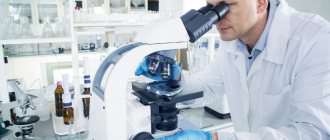1Why does androgenetic alopecia occur in women?
It is generally accepted that only men suffer from this type of baldness. This is an erroneous statement. Up to 30% of women over 50 years of age have this pathology.
The human body works under the power of hormones. In men, androgens predominate, and in women, estrogens predominate. Androgens are also present in small quantities in women.
They are produced by the adrenal glands, ovaries, peripheral tissues and organs (skin, liver, fat, muscle tissue). Normal hormonal levels determine the development of the genital organs, the functioning of the glands, as well as female or male hair growth.
If, for one reason or another, the level of male hormones in the female body increases, androgenetic alopecia may develop.
This type of baldness in women can occur without an increase in androgen levels if there is increased sensitivity of the hair follicles to male hormones.
Increased susceptibility in women is inherited genetically and is manifested by disruption and disorder of protein synthesis and hair nutrition. Because of this, the hair becomes thinner, turns into vellus hair and falls out.
Stages of baldness
Androgenic alopecia occurring in men is classified according to a special Norwood scale. It includes seven stages. This scale is not used for women. And they believe that baldness in young ladies occurs in only three stages. Their description is given in the table.
Table - Stages of baldness in women
| Stages | Characteristic |
| 1 | - Hair begins to thin; - strands become dull; - there are many split ends; - the woman notices profuse hair loss; — the difference between falling out and growing strands is practically absent |
| 2 | — Curls lose volume; - rapid hair loss is noted on the crown of the head; - thinning is observed along the parting |
| 3 | — Pronounced bald patches are noticed at the temples, in the parting area; - hair grows abundantly above the lip, on the arms and legs; - voice deepens |
2Symptoms
The main symptom of androgenetic alopecia is hair loss. It has its own characteristics for women.
Initially, the hair thins from the forehead and crown. In the area of the central parting, the hair also thins out intensively, exposing a strip of bare scalp, which is visible through the remaining hair.
Androgenetic alopecia in women is characterized by the fact that in the occipital region the thickness and growth of hair usually remain the same. Only with a diffuse form can the occipital region also remain hairless.
External means
The right cosmetics for external use are no less important than medications.
A brief overview of the most popular means:
- Rogaine. Due to the content of minoxidil in a large dosage, it has a pronounced vasodilator effect.
The first results can be noticed no earlier than after 2 months of regular use. The maximum effect is achieved after a year of use. From this time you can switch to a maintenance dosage. Complete withdrawal of the product will lead to a new active process of baldness. - Alerana. The active substance is still the same minoxidil. The effect is achieved within six months to a year of use. Requires constant use, as withdrawal leads to hair loss again.
- Generolon. Contains minoxidil, propylene glycol, ethanol and water. The action and durability of the effect are similar to other minoxidil-based products.
- Hormonal ointments (dexamethasone, prednisolone, fluocinalone, triamcinolone).
The use of glucocorticosteroids is recommended for the treatment of androgenetic alopecia in young women subject to the initial stage of the disease. The minimum duration of the course is 4 weeks. However, none of the above drugs can provide a lasting effect. At the same time, the use of hormonal external agents on an ongoing basis leads to the development of serious pathologies. - Dithranol. The effect of the cream is similar to the immunomodulation procedure.
The drug causes persistent allergic reactions, as a result of which the hair follicles awaken. The cream has no proven effectiveness with long-term use. But it can provoke unwanted reactions from the skin. - Magic shampoo . Professional cosmetic product to stimulate hair growth. The manufacturer promises results of +3 cm, but judging by the reviews, the achieved effect is comparable to normal hair growth rates.
- Renokin Lotion . A product based on natural peptide compounds.
Provides protection to the scalp and hair follicles, stops the further development of alopecia and stimulates the growth of new hair. The greatest effect can be achieved by using the entire line, including shampoo, conditioner and lotion. - We're chronicling. A drug for daily rhythm, developed taking into account human biorhythms.
The line includes products for day and night use. “Day” is responsible for suppressing the activity of enzymes, “Night” - stimulates the work of follicles and activates hair growth. The course of treatment is at least 3 months. Throughout this period, you need to regularly consult a trichologist. - Tricostim. A two-phase product based on zinc, essential oils and vitamin complexes. Effective in preventing further hair loss. It does not work as a means of restoring lost strands.
3 Stages of development
The following stages are distinguished during androgenetic alopecia:
Stage 1 – hair in the parting area in women begins to grow less frequently, becomes dull, and becomes more brittle.
Stage 2 – hair loss intensifies, hairless areas spread in the parietal region, affecting the frontal region.
Stage 3 – almost the entire parietal and frontal region is hairless. Partial hair in women is preserved on the back of the head and in the temple area. The head is covered with thin fluff. If the process progresses, then the back of the head and the temporal region also remain hairless.
Treatment of the disease
Treatment of androgenetic alopecia is very difficult and lengthy. Cessation of therapy almost always leads to relapse of the disease.
In the treatment of female pattern baldness, medications that suppress the effect of androgens are used. Among the products for external use, herbal lotions are highly effective: “Chronostim”, “Tricostim”.
Significant clinical improvement in women is caused by Minoxidil solution, the local application of which slows down the process of hair loss and, in most cases, resumes hair growth.
Minoxidil solution is sold in pharmacies under the trade names “Alerana”, “Generolon”, “Kosilon”.
For the general treatment of common baldness in women, cyproterone acetate is effective . The drug should be used in conjunction with estrogen-containing products, as it suppresses the production of estrogen.
In this regard, the combined oral contraceptives “Diane-35” and “Silest” deserve special attention. If the areas of baldness are too large, then surgical hair transplantation makes sense. You can find out more about modern transplant methods, including non-surgical techniques and the price of this procedure, on our website.
Unfortunately, androgenetic hair loss in women cannot be completely cured . Topical use of sprays, lotions and shampoos against baldness will help preserve hair and prevent further hair loss, however, they will have to be used for life.
On our website you will find a lot of articles on the topic of “alopecia in women”:
- the main causes of diffuse hair loss in women;
- the main causes and types of alopecia in women as well as methods of treating baldness;
- unexpected hair loss - alopecia in women (focal);
- hair loss in women - it’s time to go to the doctor and get acquainted with effective remedies for baldness;
- created by nature: the best homemade masks for baldness for women;
- little tricks or recipes for folk remedies for baldness in women.
4Causes of androgenetic alopecia
The following diseases and conditions can lead to hormonal imbalance with a predominance of androgens in the female body:
- Endocrine disorders. Pathological processes in the area of the adrenal glands and urogenital tract lead to disruption of the functioning of the endocrine glands, liver, and ovaries. This affects the woman’s hormonal background and creates the preconditions for hyperandrogenemia.
- Androgen-producing tumors of the ovaries, adrenal glands, and skin appendages are another serious pathology in which baldness is one of many symptoms indicating problems in a woman’s body
- Polycystic ovary syndrome
- Pregnancy, lactation, postmenopause
These periods in a woman’s life are the most vulnerable due to hormonal fluctuations. Any stress, physical or mental fatigue, colds can give impetus to the development of the pathogenesis of alopecia
- increased androgen production due to diseases such as acromegaly, hyperprolactinemia
- Long-term use by women of oral contraceptives, glucocorticosteroids, antidepressants
- genetic predisposition. As a rule, with an inherited form of baldness, there is a normal level of male sex hormones in a woman’s body, but the sensitivity of the hair follicle receptors to them is many times increased.
Characteristics of the pathology
Is it possible to cure androgenetic alopecia in women? This is the first question asked by representatives of the fair half of humanity when they notice a noticeable thinning of the strands in the parting area. According to trichologists, it is in women that the treatment of this pathology is more successful than in men. In most cases, it is possible to stop hair loss, but only if all doctors' recommendations are strictly followed.
Brief description of the problem
In a woman’s body, both female and male hormones can peacefully coexist. The first, estrogens, are responsible for the proper functioning of the reproductive system and provide female attractiveness. Male hormones - androgens - stimulate metabolic processes and take part in the formation of estrogens.
In a healthy body, hormones are in a certain balance. But if this balance is disturbed in the male direction, then a wide variety of pathologies can develop: excessive male-type hair growth, deepening of the voice. And sometimes intense hair loss begins, diagnosed by doctors as androgenic alopecia. This pathology is classified according to ICD-10 code L64.
Androgenic alopecia begins in women in the crown area. It is in this area that hair follicles are most sensitive to androgens. The bulbs weaken their “grip”, and the strands, no longer held, begin to fall out.
Risk factors
The causes of androgenetic alopecia in women lie in hormonal imbalances, in which the amount of androgens in the body increases. But why do such violations occur? Doctors identify nine factors that can trigger baldness.
- Genetic predisposition. The tendency to hormonal imbalance and androgenic alopecia can be inherited. Therefore, if women in your family suffered from a similar problem, you are at risk.
- Endocrine diseases. Some diseases are characterized by an increase in the synthesis of male hormones. These disorders can provoke male-pattern hair growth in a woman, the appearance of amenorrhea and androgenetic alopecia. Baldness is observed with ovarian hyperplasia, adrenal hypertrophy, polycystic ovary syndrome, and pituitary hyperplasia.
- Pregnancy period. The period of the birth of a new life is accompanied by a real hormonal storm occurring in the female body. Such changes can cause severe hair loss. In most cases, the strands are restored within a few months after childbirth. But sometimes medication is required.
- Menopause. With the onset of menopause, quite serious changes occur in a woman’s body. The production of female hormones is significantly reduced. Against this background, an increase in androgens may be observed. Baldness due to menopause is usually irreversible.
- Severe stress. The development of androgenic alopecia can be triggered by situations when a woman, under stress, has to take on roles that are unusual for her. For example, after the death of the father, to be responsible for the family or after a divorce to raise children independently and pay the mortgage. Such responsibility can provoke a sharp change in hormonal balance towards androgens.
- Taking medications. Abuse of certain medications can have a negative impact on the body. As doctors' reviews show, hormonal disruptions most often result from uncontrolled use of contraceptives, hormonal drugs, antidepressants, and antibiotics.
- Strict diets. An incorrect, unbalanced diet, long-term adherence to strict diets lead to a deficiency of minerals and vitamins in the body. The body, experiencing a lack of useful substances, begins to independently “turn off” unnecessary systems in order to provide the necessary nutrition to the heart and brain. Most often, the reproductive system is the first to suffer, which triggers hormonal imbalances. As a result, androgenetic alopecia may occur.
- Tumors. Such neoplasms, especially if they are malignant, can cause disruptions in any body system.
- Gastrointestinal diseases. Disturbances in the digestive system can also change the production of hormones.
The ancient physician Hippocrates claimed that eunuchs never go bald. This fact was later noted by Aristotle. And only in the twentieth century, Dr. James Hamilton put forward the theory that the cause of baldness is hidden in the excessive synthesis of male sex hormones. This fact fully explained the lack of baldness among eunuchs.
Varieties
Hair loss in women is less severe than in men. It usually begins around age 50. But sometimes it also occurs in 20-30 year old young ladies. Unlike the stronger half of humanity, women almost never experience complete baldness. The types of alopecia are presented in the table below.
Table - Types of androgenic baldness in women
| Type of alopecia | Characteristics of baldness |
| Strip type (I-shaped) | — There is a decrease in density in the parting area; - over time, areas of thinning are observed, stretching from the parting to the temples |
| Male type | — It is extremely rare in women; — thinning of strands is observed in the forehead and crown area; over time, these areas become completely bald; - alopecia often develops within 2-4 months |
| Nest type | — Hair thinning begins in the parting area; - simultaneously, hair loss is observed on the frontal area and crown of the head; - in a short time a rounded “nest” appears - a completely bald area |
5Diagnostics in women
If a woman suspects that she has androgenetic alopecia, she should pay attention to whether her body, along with thinning the number of hairs on her head, has the following symptoms:
- menstrual irregularities (absence of menstruation, or, on the contrary, too much uterine bleeding, problems with fertility or pregnancy);
- excess hair growth on the body, neck, chin area;
- deepening of the voice;
- atrophy of the mammary glands;
- acne.
If alopecia is combined with one of the above symptoms, there is a very high probability that the woman will develop androgenetic alopecia. But an accurate diagnosis must be made by a doctor.
For the purpose of examination, you should visit the following specialists: a trichologist, a therapist, an endocrinologist, a gynecologist. Undergo a set of analyzes and studies, including:
- general clinical blood and urine tests, blood glucose test;
- biochemistry;
- blood test for thyroid and adrenal hormones, sex hormones (determination of testosterone and estrogen levels);
- Ultrasound of the kidneys and adrenal glands;
- CT, MRI of the hypothalamic-pituitary region;
- examination of hair structure under a microscope;
- phototrichogram (determination of hair growth density);
- scalp biopsy.
Causes
And although androgens are considered male hormones, they are also present in the female body. They interact with other hormones, participate in metabolism and other processes in the body. When the normal dose is exceeded, androgens have a negative effect on the scalp. As a result of their action, hair growth slows down, the shaft becomes thinner, and the follicle freezes. Hair falls out a lot, but new hair does not grow back, resulting in bald spots appearing on the top or back of the head.
Reasons include:
- hormonal imbalances;
- diseases of the endocrine system;
- prolonged stress;
- neuropsychiatric and autonomic problems;
- food system diseases;
- postmenopause.
Pregnant women are also at risk.
Due to hormonal imbalance and stress, they often face the problem, but after childbirth, hormone levels are usually restored. The pathology is inherited. Inflammatory processes in the scalp, lack of vitamins, poor diet and other factors can provoke its development.
6Principles of treatment of androgenetic alopecia
The sooner the disease is detected and the cause that provoked it is established, the greater the likelihood of successful hair restoration.
Therapy for androgenetic alopecia in women includes a complex effect on the cause of the disease, as well as symptomatic methods aimed at restoring hair growth.
Drug therapy is prescribed according to indications and includes:
- Antiandrogen drugs that lower the level of male hormones. Prescribed exclusively on the recommendation of a doctor: Marvelon, Logest, Janine, spironolactone.
- estrogen and progesterone preparations. Allows you to increase the level of female sex hormones, thereby blocking the production of androgens.
Symptomatic therapy for androgenetic alopecia in women is aimed at restoring the functioning of the hair follicles. The following have a good effect in the treatment of androgenetic alopecia:
- Minoxidil. Solution for external use 2.5%. It has a vasodilating effect, thereby helping to improve metabolic processes inside the follicles. Stimulates hair growth. It is recommended to apply the solution externally, twice a day, the effect of its use occurs after 2-3 months.
- Immunomodulators: immunobex, trimunal, echinin
- Vitamins B, D, A, E. Complex multivitamins with microelements: Zn, Se, Mg.
- ointments based on glucocorticosteroids, tinctures with pepper extract. Medicines are rubbed into intact scalp, they have an irritating effect, increase blood flow to the hair follicles, and accelerate metabolic processes.
Options and order of therapy for AGA.
1.
Detection of hyperandrogenism and, if present, its correction. This will require the participation of a gynecologist-endocrinologist, since the most common cause is polycystic ovary syndrome. However, we remember that hormones may be normal.
2.
Protection of hair follicles from the destructive effects of dihydrotestosterone (blocking the enzyme 5-alpha reductase). Important! What helps men (usually prescribed finasteride) does not help women! In the treatment of AGA in women, spironolactone (veroshpiron) has proven itself to be effective - it is a potassium- and magnesium-sparing diuretic with a good ability to block 5-alpha reductase. Diane-35 is also often prescribed, which is also used as an oral contraceptive - here you need to look individually at whether this treatment method is right for you. Herbal products can help - zinc, vitamin B6, dwarf palm fruit extract.
3.
Therapy for AGA must necessarily include the prevention and treatment of fibrosis, since with AGA chronic inflammation develops inside the follicles. As a result of inflammation, the connective tissue grows and microscars appear on the scalp. The scalp becomes inactive, rough, the skin is thick and dense. To begin high-quality hair restoration therapy, anti-inflammatory therapy and the fight against fibrosis are a necessary step. At home, these include peelings with acids, the use of anti-inflammatory drugs in the form of special shampoos, masks and lotions. In clinics, this also includes physical therapy using ultrasound, laser, electropheresis and other procedures.
4.
Unblocking non-functioning follicles - using hair growth stimulants. Minoxidil is usually prescribed, but it has long been known about a large number of side effects and contraindications for this drug: pronounced withdrawal syndrome, complications from the cardiovascular system, frequent itching and irritation of the scalp. Many trichologists say that the inclusion of minoxidil in the treatment regimen for AGA is no longer relevant today. Significantly more effective means, including external ones, with amino acids, peptides, zinc, estrogens, herbs, plant extracts, as well as the use of plasma therapy, ozone therapy, mesotherapy, exposure to a fractional apparatus, trichological massage. The best effect is achieved by combining several techniques.
5.
Creating the necessary conditions for hair growth and restoration - eliminating the deficiency of microelements, ensuring high-quality blood supply. This is very important, since hair follicles are extremely sensitive to these two factors. In conclusion, we would like to add that only an experienced trichologist should diagnose AGA and prescribe specific treatment. Therefore, if you are concerned about hair loss, we recommend that you immediately consult a specialist.
LEARN MORE ABOUT HAIRFOOD PRODUCTS
8Stimulation of hair growth through mesotherapy
A modern method of treating androgenic type alopecia is mesotherapy. This method is based on the administration of medications consisting of vitamins, microelements, and nutrients by injection - puncturing the scalp in areas of impaired hair growth.
The procedure for alopecia in women can be carried out using a small syringe, which is administered by the doctor himself, or using special devices for mesotherapy.
The course of injections and the method of their administration for androgenetic alopecia are determined by the doctor in each specific case.
Lifestyle and menu
Treatment of androgenetic alopecia is a long process that requires perseverance and a lot of patience. At the same time, successful therapy includes not only medications and physical procedures. You need to change your lifestyle and review your menu.
Tips from trichologists
To enhance the healing process and protect your strands from falling out, you need to follow a few simple recommendations. Such advice should be followed not only by those who have experienced alopecia, but also by absolutely healthy people - as a preventive measure against baldness. General recommendations:
- stop smoking;
- wash your hair only with natural shampoos;
- make sure you get enough rest;
- treat all diseases in a timely manner;
- undergo regular medical examinations;
- reduce your coffee intake (no more than three cups per day).
It would be a good idea to follow other tips:
- rinse your hair with herbal decoctions - use infusions of burdock, chamomile, peppermint, nettle;
- refuse styling products - if this is not possible, resort to their help extremely rarely;
- protect yourself from stress and depression - if necessary, consult a psychologist or psychiatrist;
- do not use hormonal contraceptives - except for drugs prescribed by a doctor;
- be sure to wear a hat - this advice is relevant if the air temperature drops below 0ºC;
Dietary ration
Baldness is often accompanied by a lack of nutrients in the body. To replenish them, the patient is prescribed vitamin and mineral complexes. However, proper nutrition should also contribute to the restoration of the body. The products required for treatment are listed in the table below.
Table - Recommended food groups for alopecia
| Group | Products |
| Sources of Omega Fats | — Fish (mackerel, pink salmon, hake, herring, trout, mackerel, salmon, tuna, cod, chum salmon, herring, flounder, sprats, sardines, halibut, stellate sturgeon, eel, mullet); — sea shellfish (squid, octopus, oysters); - soy; - nuts: cashews, almonds; — unrefined vegetable oils (sunflower, olive, flaxseed) |
| Easily digestible proteins, carbohydrates | - Spinach; - broccoli; - lettuce; - parsley; — cabbage (white, red, cauliflower, Beijing); - leek |
| Sources of vitamin B12 | — Meat (beef, rabbit, lamb, chicken); - eggs; — offal (liver, heart, tongue); — dairy products (cottage cheese, sour cream, kefir, milk, cheese); – fish (herring, sardine, trout, mackerel, sea bass) |
| Sources of fiber | - Carrot; - eggplants; - beet; - zucchini; - cucumbers; - celery |
| Sources of microelements – zinc and iron | — Legumes (peas, beans, lentils); - flakes (oatmeal, buckwheat); - porridge (barley, buckwheat, wheat); - whole wheat bread; - citrus fruits (grapefruit, lemon, orange); - vegetables (potatoes, garlic, radish); - hard cheese; - meat (chicken, turkey); - berries and fruits (apples, black currants, raspberries); - green tea |
Semi-finished products and fast foods are completely unhelpful and even harmful for androgenetic alopecia. It is recommended to avoid smoked foods, baked goods and sweet desserts.
Do not forget that it is very difficult to independently determine the symptoms of androgenetic alopecia in women in the initial stages. If you suspect something is wrong, then count how much hair falls out during the day. Normally, in a healthy person, this amount varies from 50 to 150. If you lose more than 150 hairs, this does not mean that you are going bald, but it is a serious reason to consult a doctor.
9Diet
Nutrition for patients suffering from androgenetic alopecia should be complete and balanced in terms of fats, carbohydrates, enriched with proteins, vitamins, and microelements.
Coffee, alcohol, marinades, and sweets should be excluded from the diet.
You can’t starve or limit the protein content in your diet. For alopecia, it is advisable to eat boiled meat, sea fish, walnuts, liver, boiled eggs, corn, and legumes.
Oats are useful for hair loss - they are a storehouse of vitamins, microelements and amino acids. Oat porridge can strengthen hair and stop hair loss due to alopecia.
Topical application of melatonin
Melatonin is a hormone produced in the pineal gland or pineal gland. Its main function is not only to control sleep and biorhythms, but also to normalize the production of thyroid hormones and sex hormones. It also affects the production of serotonin, a hormone that improves memory, attention and mood.
In addition to all of the above, melatonin can slow down not only the aging process, but also control pigmentation and hair growth. Its deficiency leads to hair loss and thinning (melatonin blocks the action of androgens in the hair follicle), early gray hair.
Those at risk for melatonin deficiency are those whose work involves frequent changes in time zones, night shifts (medical personnel), and young mothers.
Melatonin is produced at night in complete darkness from 11 pm to 2 am. This is why going to bed early is so important.
Normalizing sleep helps eliminate many of the symptoms of melatonin deficiency. In my practice, I often prescribe prescription melatonin in the form of hair spray and lotion to treat hormonal causes of alopecia.
Low intensity laser helps speed up the growth of newly grown hair. Provides stimulation of local blood circulation for oxygen saturation and treatment of lack of nutrition of hair follicles.
10Folk methods in treatment
A good addition to the main treatment of androgenetic alopecia may be therapy using unconventional methods: applying masks, compresses to the scalp, made according to recipes from traditional healers and healers.
The only condition that doctors call for, before starting treatment of androgenetic alopecia with non-traditional medicine, is to consult a doctor.
Popular recipes for androgenic type alopecia “from the people” in women are the following:
- Grate the head of garlic and the head of onion on a fine grater, squeeze out the released juice through double gauze. Rub once a day into bald areas of the head.
This method should not be used if there is an individual intolerance, as well as if there are abrasions, scratches, or redness of the skin.
- Grate fresh burdock root, mix it with aloe juice and burdock oil in a ratio of 2:1:1. Make a mask from the resulting mixture once every 2-3 days for 20-30 minutes, wrapping your head in cellophane and a towel. Then rinse the mixture with warm water.
- Mix the yolk of a chicken egg, a tablespoon of linden honey, and a dessert spoon of aloe juice. Apply to the roots of the hair, wrapping it in a cellophane cap for 20 minutes. Afterwards, rinse with warm water.
- After each shampooing, rinse your hair with a warm decoction of fresh stinging nettle leaves. Nettle accelerates hair growth and follicle regeneration.
Prevention
Androgenetic alopecia is often inherited. If one of your relatives suffered from this disease, then in order to protect yourself, it is recommended that you take the following preventive measures :
- Try to take proper care of your hair.
- Use only high-quality shampoos to wash your hair. The water temperature should not be higher than 40 degrees.
- Try not to use curling irons, straighteners or hair dryers.
- You should not comb wet hair, because it becomes more fragile this way.
In addition, your diet also affects . Therefore it must be balanced .
Try to eat as many vegetables and fruits as possible. To keep your hair strong and have a healthy shine, be sure to include protein-rich foods containing amino acids . Such products are milk, cottage cheese, fish, meat, eggs.
As for spicy, fatty, fried foods , on the contrary, it is better to avoid .
Frequent stress can also cause androgenetic alopecia, so try to protect yourself from it.
As soon as you begin to notice the characteristic signs of baldness - thinning and severe hair loss, immediately go to see a dermatologist or trichologist.
Vitamins
To treat androgenetic alopecia, in addition to medications, vitamins are prescribed. These include:
- Zinc is a hair growth stimulant. The antiandrogenic effect of the drug is to reduce the activity of the sebaceous glands and reduce the formation of acne. The daily requirement is 15 grams.
- Vitamin B6 – takes part in various metabolic processes occurring in the body. The vitamin is able to change the reaction of tissues when exposed to androgens. For women, the daily dose of vitamin B6 is 2 mg.
- Palmetto extract is another effective antiandrogen. This element cannot be found in its pure form, but it is contained in such preparations for baldness, such as, for example, Rinfoltil.
Massage
Massage is an effective procedure that is used to stimulate hair growth. Its beneficial property is that during the massage, blood flow to the scalp and hair roots noticeably increases. This contributes to their growth.
11Prevention
Prevention of androgenic type alopecia in women consists of maintaining a healthy lifestyle, proper nutrition, timely medical examination and monitoring one’s own health.
If symptoms indicating increased androgen levels appear, such as: irregular menstruation, increased body and facial hair, deepening of the voice, you should not delay a visit to the doctor.
Stress, poor nutrition, and excessive physical activity can also become a trigger factor in the development of androgenetic alopecia.
Try to be exposed to stressful situations as little as possible, eat balanced foods, and adhere to a diet.
Here's what you need to do first:
Low glycemic index diet. Give up sweets and lead the healthiest lifestyle possible. A healthy diet is the first step towards treating alopecia. The quality of food can affect hormonal levels, especially in the presence of endocrine disorders. Give preference to fresh vegetables, fatty fish, nuts and oils (butter, olive, coconut), seaweed.
Refusal of dairy products. Cow's milk increases the level of dihydrotestosterone in the blood, one of the most aggressive androgens leading to hair loss.
Caring for peace of mind. Chronic stress has never made anyone younger and more beautiful. So meditation, yoga, and relaxation will be excellent helpers for you on the path to recovery.
To give up smoking. This addiction leads to increased androgen levels, thereby promoting hair loss.
Zinc. Plays an important role in the process of hair growth and restoration. Alopecia is a common symptom of its deficiency.
Vitamins and microelements. In a comprehensive therapy program, vitamins A, D, C, group B (especially vitamin B3/niacin) are especially important, as well as magnesium, omega-3 fatty acids can lower testosterone in women.
Amino acids. Lysine, cysteine, methionine and taurine contribute to the formation of a healthy hair matrix.
Saw Palmetto and Green Tea Extract. Contains phytoesterols that help reduce dihydrotestosterone levels
12Questions from women with alopecia
Most often, women suffering from androgenetic alopecia ask the following questions:
13Will my hair grow back on my head?
It is impossible to give a definite answer. Much depends on the cause that caused androgenetic alopecia, as well as on the stage and degree of neglect of the process.
As a rule, genetically determined alopecia in women is difficult to treat. Other reasons, with timely treatment, can be eliminated, a woman’s hormonal levels can be adjusted, in this case there is every chance of success in acquiring beautiful hair.
What hormone tests are needed:
- Testosterone free and bound
- DHT (dihydrotestosterone)
- DHEA (dehydroepiandrosterone sulfate)
- Estradiol
- Androstenedione
- Cortisol
- Insulin
- Thyroid hormones
Treatment is aimed at reducing DHT and 5-alpha reductase enzyme activity
Therapy for AGA should be started as early as possible. After all, not only the growth of the hair itself is disrupted, but also the destruction of the follicle with the development of fibrosis. And if you miss precious time, even a hair transplant will not help.
Remember, TIME = HAIR!
Not even the most expensive therapy will have an effect if you do not change your lifestyle and eating habits.
Organic Woman online course
Anna Medvedeva talks even more about female hormones in the Organic woman course, and also answers pressing questions. The best speakers and the most useful information about health and nutrition are here.
More about the course
Treatment
It should be noted that this is an extremely long, expensive and labor-intensive process. Androgenetic alopecia is difficult to treat, so it is necessary to strictly follow the dermatologist’s prescriptions and regularly use the necessary medications. Unreasonable interruptions or improper use of medications will render therapy useless.
Conservative therapy
Treatment for men and women differs significantly. Since the need for androgens in males is much higher, medications that completely block the action of testosterone cannot be used. Otherwise, this will lead to feminization (the appearance of female sexual characteristics) of the man, impotence and the disappearance of libido.
Products for women are designed to completely block the action of androgens. As a rule, therapy is supplemented with drugs of female hormones (estrogens), which increases its effectiveness.
Currently, the following treatment regimens for this hormonal disease are used:
| Treatment in women | Treatment in men |
Combined preparations that include both of these active ingredients - Klimen, Chloe, Erica-35, Diane-35, Bellune-35, MODELL PURE. Preference should be given to these medications. |
The course of treatment ranges from 1 to 2 years. Finasteride rarely causes side effects such as impotence or decreased libido. At the same time, it is highly effective - it is possible to stop hair loss in 80% of men. |
| Minoxidil (Cosilon, Alerana, Alopexi, Revasil, Generalolon, Rogaine) - this medicine can be used in patients of both sexes, if the above drugs are ineffective. It has an important feature - Minoxidil is not effective if the disease lasts longer than 5 years . The first effect of treatment appears no earlier than 10 months after the start of treatment. | |
Only the attending doctor can prescribe an exact treatment regimen after examining the patient and studying his hormonal levels. If conservative treatment is ineffective, there are other ways to correct androgenetic alopecia.
Surgery
The only way to quickly get your hair back is through hair follicle transplantation. Surgical treatment does not get rid of the disease; it only has a cosmetic effect, and a temporary one at that. To preserve the transplanted hair, it is necessary to combine the transplantation with conservative therapy, which will be prescribed by a dermatologist after consultation and laboratory examination.
Physiotherapeutic treatment
The only proven method of physiotherapeutic treatment is a special laser comb LaserComb HairMax. The American FDA conducted clinical trials of this device and confirmed its effectiveness. In combination with conservative therapy, it is possible to achieve better results from treatment in a shorter time.
